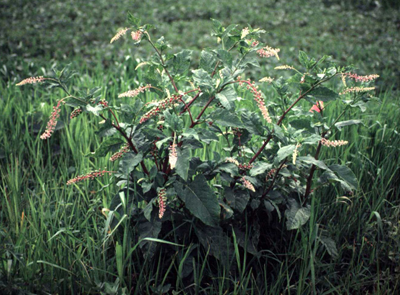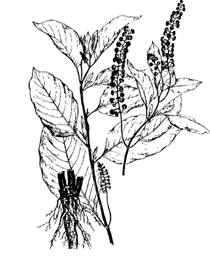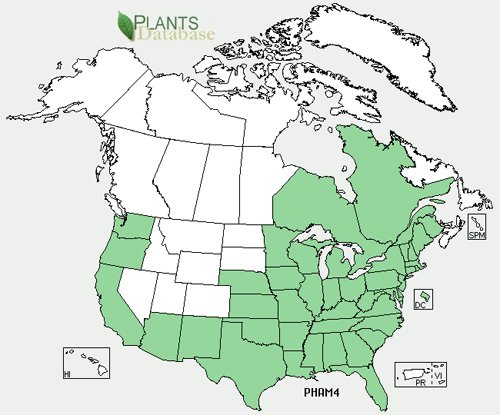Pokeweed
(Phytolacca americana L.)

Photo Courtesy Ohio State Weed Lab Archive – Ohio State University

USDA-NRCS PLANTS Database / Britton, N.L., and A. Brown. 1913.
An Illustrated Flora of the Northern United States, Canada and the British Possessions.
Pokeweed (Phytolacca americana L.):
Common Pokeweed, Poke Root, Poke Salad (or Poke Sallet), Poke Berry.
It is a tall, simple perennial herb, growing from a thick, fleshy root. Pokeweed grows from the crown of the thick fleshy root, but reproduces only by seed. Pokeweed is found from Maine to Minnesota and southward, to Florida and Texas, west through Arizona and up the west coast to Washington. Usually, it grows in damp rich soils in woodland clearings, in rich pasture lands, in recently cleared areas, along fence rows, and in waste places.
The erect stalk in good soil and growing conditions can grow to a height of ten feet. The stalk is green in the Spring turning red or purple as it matures and the berries ripen. The root is conical, large and fleshy, covered with a thin brown bark. Leaves are about 5 inches long and 2 to 3 inches wide, simple, alternate, ovate-lanceolate, and smooth. Flowers appear from July to September are long-stalked clusters, each having 5 whitish petals with green centers. Fruit is a rich deep purple round berry, containing a rich crimson juice.
Food :
Thoroughly cooking the plant reduces its toxicity. The effects of eating the uncooked or improperly prepared plant can include nausea, vomiting, and diarrhea.
• Young shoots are boiled in two or three changes of water to remove toxins
Other Uses :
• A red ink or dye can be extracted from the berry
• Rootstock contains saponins thus can be used as a substitue for soap
Distribution





